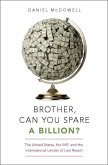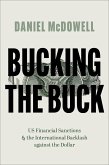
Gebundenes Buch
The United States, the Imf, and the International Lender of Last Resort
1. Dezember 2016
Oxford University Press
| Broschiertes Buch | 39,99 € | |
| eBook, ePUB | 15,95 € | |
| eBook, PDF | 20,95 € |

16,95 €
Sofort per Download lieferbar
eBook, PDF
14. März 2023
Oxford University Press
| Broschiertes Buch | 34,99 € | |
| eBook, ePUB | 16,95 € |
16,95 €
Sofort per Download lieferbar
4,99 €
inkl. MwSt. und vom Verlag festgesetzt.
Sofort per Download lieferbar
eBook, ePUB
30. Juni 2024
M. Daniel McDowell
4,99 €
inkl. MwSt. und vom Verlag festgesetzt.
Sofort per Download lieferbar
eBook, ePUB
24. September 2023
M. Daniel McDowell
Broschiertes Buch
The United States, the Imf, and the International Lender of Last Resort
1. Dezember 2018
Oxford University Press
20,95 €
Sofort per Download lieferbar
15,95 €
Sofort per Download lieferbar
Ähnlichkeitssuche: Fact®Finder von OMIKRON
